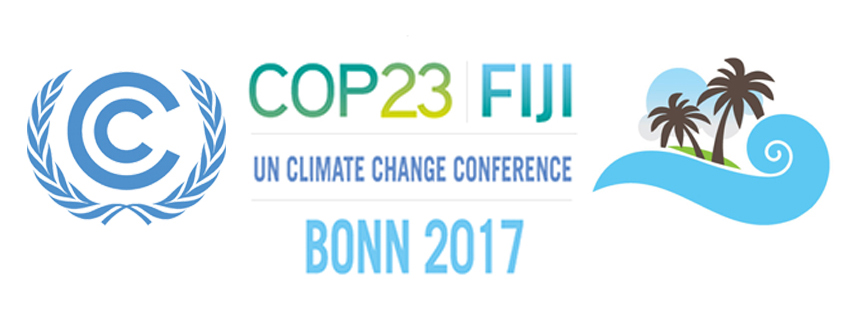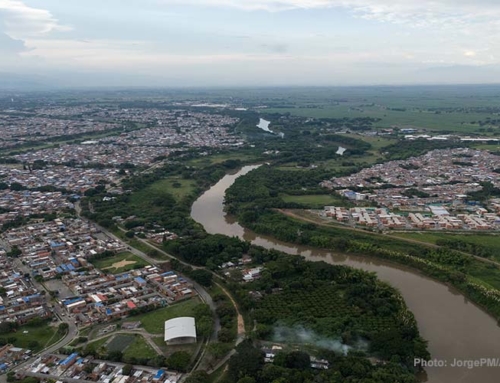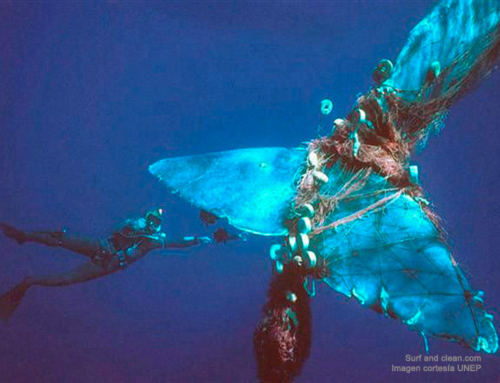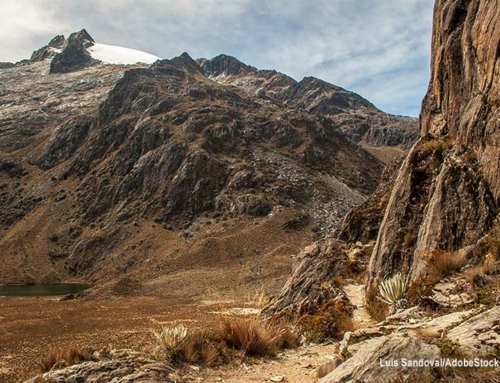The curtain has fallen on the stage that gave place to the twenty-third “Conference of the Parties on Climate Change”, held between November 6 and 17, 2017, in Bonn, chaired by Fiji. The German city facilitated the space, infrastructure and part of the organization necessary to carry out the event. Why Bonn? Because it is the permanent seat of the UN Framework Convention on Climate Change (UNFCCC). For the celebration of these conferences, Bonn has confirmed his experience on multiple occasions. Among these are the UN climate meetings, such as COP5, 1999 and the second part of COP6, 2001.
Fiji, its vulnerability and analogy with football
Fiji is a tiny island country of the Polynesia, three hours away from the nearest land, located in the solitude of the ocean and frequently hit by cyclones and floods and the fury of the waves. With its nearly 300 islands of volcanic origin, the territory of Fiji is made up of atolls, whose low altitude makes it very vulnerable to the foreseeable effects of climate change. For this reason, the Fijian Prime Minister, Frank Bainimarama, assumed the presidency of the COP23 determined to maintain the momentum of the Paris Agreement, and the effort to reduce carbon emissions, the main cause of global warming. Previously, at COP22, he had said: “To use a much-loved sports analogy on our islands, the world community cannot afford to lose the ball in the decisive response agreed in Paris to face the global warming crisis that we all face, in the place of the planet wherever we live. The ball will reach Fiji and I intend, as the designated president of the COP and coming from a small island developing state, to take it as far as possible (…)”.
COP23, a conference – two zones
The event, like every year, was sponsored by the UNFCCC, this time under the coordination of Patricia Espinosa Cantellano, its executive secretary, who undertook an intense effort to bring the great event to a successful conclusion. Espinosa is a Mexican diplomat who has held the position since 2016. Prior to that, she was the head of the Mexican Embassy in Germany.
The COP23 had as its motto “one conference, two zones”, because in the “Bonn Zone” the events focused on climate action were held, while in the “Bull Zone” it was where the governments maintained their conversations. In Fijian the word “bull” means “hello” and expresses a desire for good health and happiness.
Pavilions and security procedures
The pavilions of China, France, Great Britain and Germany were very close to each other, located under the big tent of the Bonn area. The surroundings were decorated with the colors of Fiji, in the form of a semicircle, as inviting dialogue and cordiality. The pavilion of India presented a futuristic design in which a digital terrestrial globe stood out. An indigenous pavilion was also present, belonging to the representatives of the indigenous peoples of the Amazon, the Andes and the coasts of South America. To penetrate this conglomerate of pavilions had to go through a security space full of infrared devices, metal detectors and trained guards. In addition to all these controls, the authorities took other measures, such as requiring press, diplomatic or technical accreditation. The one who carried a bottle with some liquid, should take a drink to show that it was not a dangerous substance.
Seven vital issues on the table
In the first three days of the Global Climate Action (GCA) agenda, actions were focused on seven main areas: energy, water, oceans and coasts, human settlements, transport, industry and forests. On the 13th and 14th the events focused on the high-level segment, these days the featured participants presented topics on innovation, resilience and sustainable development. On the afternoon of the 15th, the highlights of the GCA program were presented directly to the delegates of the countries, ministers and heads of state, at the main plenary meeting of negotiations.
United States and the COP23
The United States presented itself at the conference with a low-ranking delegation, following President Donald Trump’s decision to abandon the Paris Agreement. However, it did not block the negotiations. The German Environment Minister, Barbara Hendricks, described as “professional and constructive the performance of the Americans.” In addition, several states, cities and representatives of companies and US civil society were present at the meeting, from where they sent a clear message: “We are still in”, subscribed by universities, governors, mayors and senators, including the Republican Party, ensuring that they would meet the goals assumed in the Paris Agreement. Through the association America’s Pledge, which brings together personalities such as Jerry Brown, Governor of California, Michael Bloomberg, former Mayor of New York and Ed Markey, Governor of Massachusetts, ratified their commitment to the planet. Senator Brian Schatz said: “Not even the most powerful man in the United States can stop the development of clean energy.” Markey said: “The president occupies a temporary mandate, while the climate struggle is a commitment of future”. World Wildlife Fund (WWF) added: “More and more governors, mayors, businessmen and other actors from the United States are taking a step forward to lead the battle against climate change.”
China takes advantage of space left by the United States
The absence of the largest economy in the world was taken advantage of by the second largest economy on the planet and the first emitter of greenhouse gases. China installed a huge pavilion in the center of the Bonn Zone, on the banks of the lake in the Rheinaue Park, the green lung of the city, next to the river Rhine.
The speech of the Asian giant showed a more active role with respect to previous conferences. China’s special representative on climate change issues, Xie Zhenhua, stated that he hoped that these UN climate talks would produce essential results that address the issues concerning developing countries, as well as a firm determination to implement the Agreement on Climate Change. Paris. Xie made the statements at the high-level South-South cooperation forum on climate change, in his country’s pavilion.
A good surprise, but only half: an alliance to leave behind the coal
Coal is one of the most polluting fuels and the first to be used massively three centuries ago. Today, despite the time that has elapsed since then, its use is still widespread throughout the planet. Coal is one of the main sources used in electricity generating plants, with 40% of world production, a fact that very few know, since it is not as news as oil and gasoline. The coal, in addition, with 25%, is the second source of primary energy used in the world, only behind oil. For all this, the burning of coal is one of the main sources of carbon dioxide (CO2) of anthropogenic origin, causing global warming.
The good news is that in the middle of COP23 it has been known that more than twenty countries have created a global alliance whereby they commit to eliminate coal from power generation before 2030. The creation of the “Powering Past Coal Alliance” it was driven by Canada’s Minister of Environment and Climate Change, Catherine McKenna, and the UK’s Minister of Climate Change and Industry, Claire Perry. The agreement to leave the use of coal as fuel in the past was signed by Angola, Austria, Belgium, British Canada, Costa Rica, Denmark, El Salvador, Fiji, Finland, France, Italy, Luxembourg, Marshall Islands, Mexico, the Netherlands, New Zealand, Niue, Portugal and Switzerland. However, among the non-signatory countries are Germany, host of the conference, Spain and Poland. Neither are the three largest CO2 emitters and consumers of coal, such as China, India and the USA. UU
Three days after the conclusion of COP23, the United States, Oregon and Washington, United States and Alberta, Ontario, Quebec and Vancouver, Canada joined the alliance.
The unavoidable last-minute impasse
The meeting proceeded as normal and each day focused on a different activity, as scheduled, until, on the last night, ready to raise the glasses, an unpleasant situation occurred that paralyzed the meeting, which lasted until high hours of the morning. In COPs, it has often happened that at the time of closing, when the road seems to be paved, a hare jumps and overturns the conference. And this was what happened that night. This was explained to Efe, in an interview, by the European Commissioner for Climate Action, Miguel Arias Cañete, who explained that “nations that have not objected to the entire process prior to and during this climate summit, are putting in this moment with the hope of getting results for their countries “. Both the commissioner and other sources consulted by Efe assured that the States that raised these objections are the so-called “Developing Countries with the same Vision,” such as China, India, Saudi Arabia and Iran. These countries want to “distort”, according to Arias Cañete, an article of the Paris Agreement, called “Facilitating Dialogue” or “Dialogue of Talanoa”, in which countries committed themselves to review the ambition of their national climate commitments in 2018. Finally, the controversies were settled. We will see what happens at the COP24, Kotowice, Poland, 2018.
Opinions and conclusions
Among the main achievements of COP23, it was agreed that the most industrialized countries provide some report every two years on the provision of the $ 100,000 million a year that must be collected to finance the developing countries, starting in 2020, the year in which it will enter the Paris Agreement. These funds will be used for the adaptation required in the fight against climate change.
The synthesis of COP23 was expressed by Michael Schäfer, of the environmental organization WWF. “The climate conference was not a big blow, but it had the expected results, Bonn worked on fine print and the conference produced a lot of small letters, but we still have not reached the goal by far”, he said. Brazil’s environment minister, José Sarney Filho concluded: “We left Bonn having advanced some distance in the direction of our collective objectives, but it is an ambitious journey and all countries will need to improve in the future.”
Patricia Espinosa, among other things, said: “With the adoption of the Talanoa Dialogue, the conference has facilitated a launching pad to move on to the next stage of greater ambition. It has also made progress in implementing guidelines of the Paris Agreement so that in 2018 it will be possible to really support international cooperation in a sustained manner, and national efforts to achieve a safer, more prosperous and better world for all”.
Sandor Alejandro Gerendas-Kiss







Leave A Comment